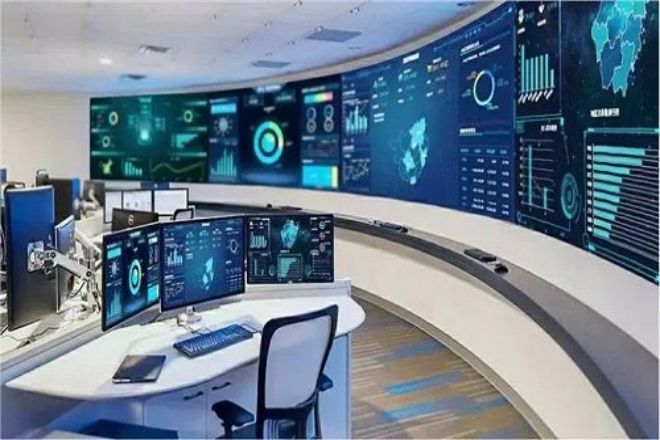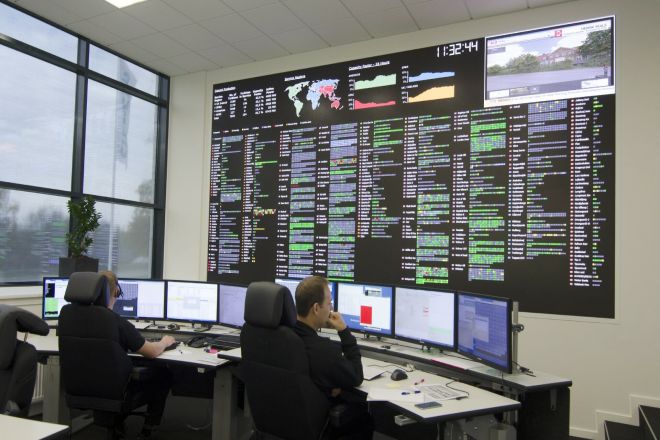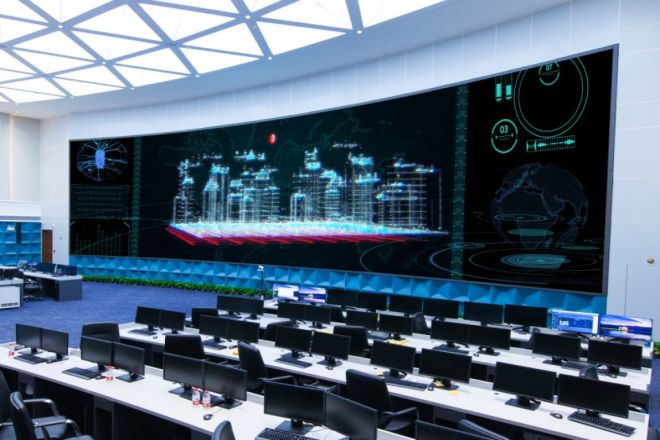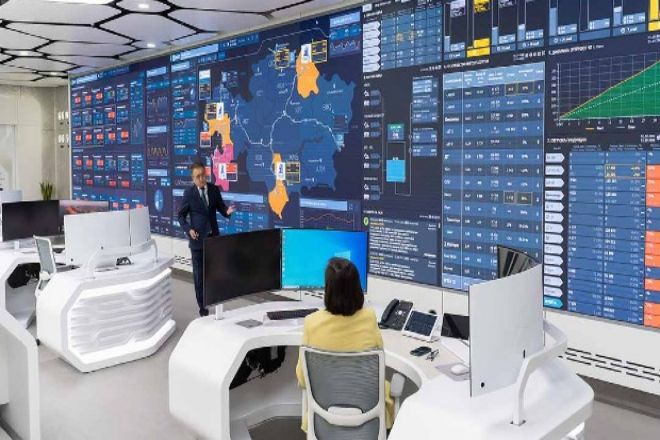Introduction

In today’s digital and information age, LED display screens, as an efficient and intuitive information display tool, have shown their strong application potential in various fields. Especially in key places such as control centers, the popularity and application of LED displays have reached unprecedented heights.
The control center, as the central hub for gathering, processing, and releasing all kinds of information, has extremely high requirements for the display of information.
LED display screens have become the preferred tool for information display in control centers due to their many advantages, such as high-definition picture quality, large size, real-time updates, energy saving, and environmental protection.
1. Application advantages of the LED display screen in the control center
The application of LED display screens in the control center undoubtedly gives it a bright light.
This advanced display technology has not only won favor with its excellent performance but has also become an indispensable tool for information display in control centers with its unique advantages.
First of all, the LED display screen brings a clear and realistic visual feast to the control center with its high-definition picture quality and excellent color performance. Just like a delicate painting drawn on canvas by a delicate brush, the LED display uses its high resolution and wide color gamut technology to present images and text vividly, making the staff in the control center feel as if they are immersed in an ocean of information. Unobstructed view.
Secondly, the large size and high flexibility of the LED display screen enable it to flexibly adapt to the space requirements of various control centers. Whether it is a spacious and bright monitoring center or a compact command center, the LED display screen can be customized according to needs, showing its changeable charm like a Transformer.
Its modular design makes installation, disassembly, and reorganization a breeze, providing more possibilities for the spatial layout of the control center.
Furthermore, the real-time information display and update functions of the LED display make the work of the control center more efficient and smoother. It is like a tireless information transmitter, receiving and displaying various monitoring data, command information, and other contents in real-time, ensuring that the staff in the control center can keep abreast of the latest situation.
Its ability to quickly switch between different contents is like a magician’s technique, making information display easy and comfortable.
In addition, the energy-saving and environmentally friendly features of LED displays also add a green charm to their application in control centers. It adopts low power consumption and a high-efficiency design, like a thrifty housekeeper, saving a lot of energy costs for the control center.
At the same time, its long life and stability also reduce maintenance costs, making the work of the control center more worry-free and labor-saving.
2. Specific application scenarios of LED display screens in control centers

The specific application scenarios of LED displays in control centers are wide and diverse. The following are some typical application scenarios:
- Real-time data monitoring and display:
In control centers, LED displays are often used to display various key data in real-time, such as traffic flow, energy consumption, environmental monitoring data, etc. These dynamically updated data help control center personnel quickly understand the current operating status and make timely decisions.
- Video conferencing and remote communication:
The high-definition picture quality and color performance of LED displays make them ideal for video conferencing. In the control center, the meeting content can be clearly displayed through the LED display, enabling remote communication and collaboration and improving work efficiency.
- Large maps and command and dispatch:
In emergency command centers or traffic control centers, LED displays are often used to display large maps or dispatch interfaces. Through these interfaces, staff can intuitively understand the operating status of each area and conduct fast and accurate command and dispatch.
- Security monitoring and alarm prompts:
The LED display screen can display the security monitoring screen in real-time. When an abnormal situation occurs, alarm prompts are provided through text, images, or sounds to help control center personnel discover and deal with security issues in a timely manner.
- Information release and announcement:
In public service centers or large enterprise control centers, LED displays are often used to release important notices, announcements, or promotional information. This helps convey information to relevant personnel in a timely manner and improves the efficiency of information dissemination.
- Energy management and environmental monitoring:
In energy control centers or environmental monitoring stations, LED displays can display energy usage, environmental quality index, and other data in real-time to help staff carry out energy management and environmental monitoring.
3. The LED display has a fast response speed and meets real-time requirements.
In the application scenario of the control center, the response speed of the LED display is one of its core performances and plays a vital role in meeting real-time requirements. Response speed mainly refers to the time required from signal input to screen display reaction, usually measured in milliseconds (ms).
In the control center, due to the need to quickly acquire and display various dynamic data, the faster the response speed of the LED display, the higher the real-time and accuracy of the information.
In order to ensure that the response speed of the LED display screen can meet the real-time requirements, the refresh rate of the display screen needs to be considered first. The refresh rate refers to the number of times the display updates the image per second.
The higher the refresh rate, the faster the image is updated and the faster the response speed. In control center applications, it is usually necessary to choose a high refresh rate LED display to ensure a real-time display of data.
In addition, data transmission speed is also a key factor affecting the response speed of LED displays. The data transmission system in the control center needs to be able to transmit data to the display screen quickly and accurately. Therefore, when choosing an LED display, you also need to consider its compatibility with the data transmission system and the stability of the data transmission.
In order to improve the response speed of the LED display, some technical means can also be used, such as optimizing the driver chip of the display and improving data transmission efficiency.
At the same time, regular maintenance and upkeep of LED displays are also important measures to ensure stable performance and continuous optimization of response speed.
4. How do the brightness and contrast of LED displays adapt to different lighting conditions?

The brightness and contrast of an LED display are key factors in its adaptability to different lighting conditions. In control center application scenarios, due to the diversity of ambient lighting, from bright daylight to dim night lights, LED displays need to be able to adjust their brightness and contrast automatically or manually to ensure that they can provide clarity under any lighting conditions. , easy-to-read display effect.
For brightness adjustment, LED displays usually have built-in brightness sensors and adjustment mechanisms. The sensor can monitor ambient light intensity in real-time and automatically adjust the brightness of the display as needed.
In a strong light environment, the display will automatically increase the brightness to ensure that the picture is clearly visible, while in a dark light environment, the brightness will be reduced to avoid visual discomfort caused by excessive brightness.
In addition, users can also manually adjust the brightness as needed to meet specific viewing needs.
Contrast ratio refers to the brightness ratio between the brightest and darkest parts of the display. High contrast can make the picture more vivid and layered. LED display screens can achieve high-contrast display effects by optimizing the pixel structure and drive circuit.
In a strong light environment, the display can maintain a high contrast, making the details of the picture clearly visible, while in a dark light environment, it can reduce the background brightness and improve the picture contrast, making the information more prominent.
In addition, in order to cope with extreme lighting conditions, some advanced LED displays also use special surface treatment technology and optical films to reduce reflection and glare and improve the visibility of the picture.
These technologies can further enhance the adaptability of LED displays under different lighting conditions.
5. Has the LED display been tested for compatibility with the control center software and hardware system?

The LED display will indeed undergo rigorous testing to ensure compatibility with the control center software and hardware system. This compatibility test is an indispensable part of the application process of LED display screens in control centers.
It ensures that the display screens can be seamlessly connected with various software and hardware systems in the control center, thereby providing stable and efficient information display services.
During the compatibility test, the LED display will connect and interact with a variety of software and hardware systems in the control center, including video processing equipment, data transmission equipment, operating systems, and various application software.
Testers will simulate actual usage scenarios and conduct a comprehensive evaluation of key indicators such as the display effect, data transmission speed, and response time.
In addition, in order to ensure the long-term stable operation of the LED display and control center software and hardware systems, a series of stability tests and reliability tests will be conducted.
These tests are designed to examine the working performance of the display under various extreme conditions, such as high temperature, low temperature, high humidity, and other environments, as well as continuous operation for a long time.
After these rigorous tests, the compatibility, stability, and reliability of the LED display have been fully verified. This means that in practical applications, the display screen can work together with the control center’s software and hardware system to provide clear and accurate information display, providing strong support for the control center’s work.
Therefore, when choosing an LED display, users can safely consider its compatibility with the control center software and hardware system and choose products that have undergone rigorous testing and have reliable quality. This will help ensure the control center runs smoother and more efficiently.
Conclusion
To sum up, the application of LED display screens in control centers has achieved remarkable results and has broad development prospects.
We have reason to believe that in the future construction of control centers, LED displays will continue to play an important role and promote the work of the control center to develop in a more efficient and intelligent direction.
If you want to know more about LED displays, please get in touch with us.
